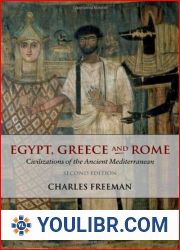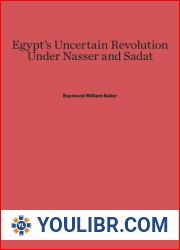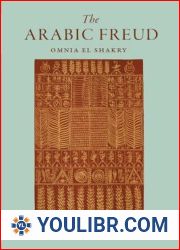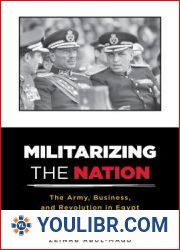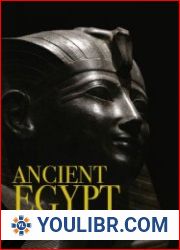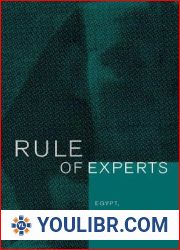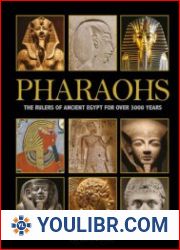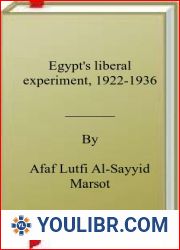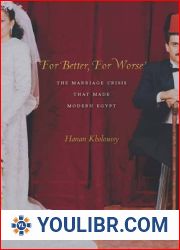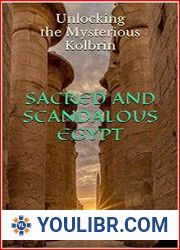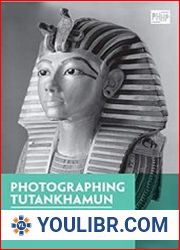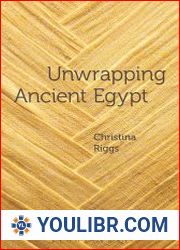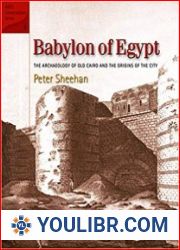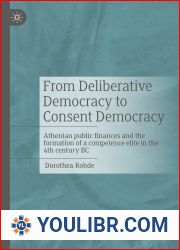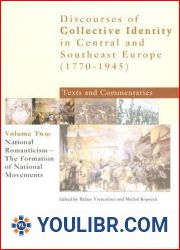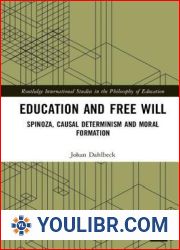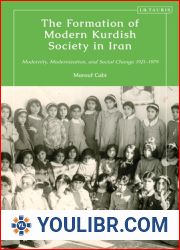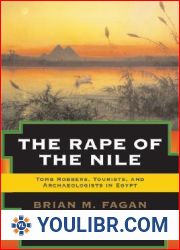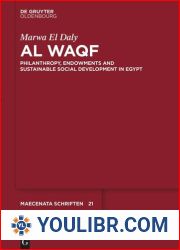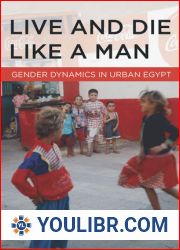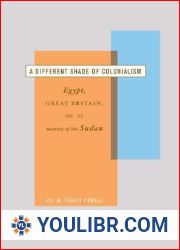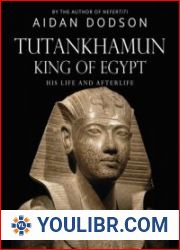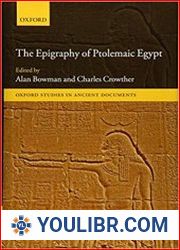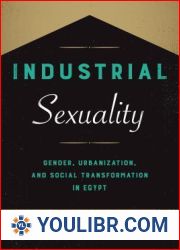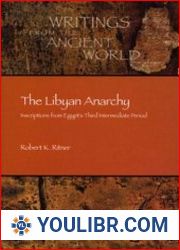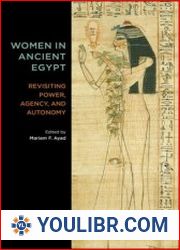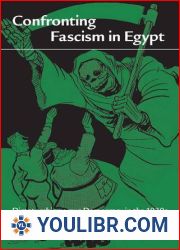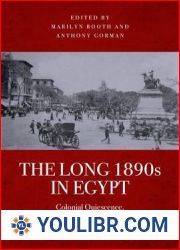
BOOKS - Egypt and Empire: The Formation of Religious Identity After Rome (British Mus...

Egypt and Empire: The Formation of Religious Identity After Rome (British Museum Publications on Egypt and Sudan, 11)
Author: E. R. O’connell
Year: April 19, 2022
Format: PDF
File size: PDF 192 MB

Year: April 19, 2022
Format: PDF
File size: PDF 192 MB

Egypt and Empire: The Formation of Religious Identity After Rome In the first millennium AD, across Eurasia and North Africa, empires rose and fell, each adopting a universalizing faith that distinguished them broadly from their neighbors. In Egypt, our sources are particularly rich, owing to the land's arid climate and the unparalleled survival of stone ceramics, metalwork, textiles, wood, and manuscripts found on papyrus, parchment, and paper. This volume brings together over a dozen of the world's leading specialists to explore the dialectical interplay between empire and religious identity through a series of case studies from Egypt. Evidence from Egypt suggests that it was precisely in the context of empire that "religious identity" emerged as a distinctive marker. Using the unrivaled abundance and variety of surviving material culture, this volume explores the formation, renegotiation, and reconstitution of religious identities from the Roman period forward.
Египет и империя: формирование религиозной идентичности после Рима В первом тысячелетии нашей эры по всей Евразии и Северной Африке империи поднимались и падали, каждая из которых принимала универсализирующую веру, которая в целом отличала их от своих соседей. В Египте наши источники особенно богаты благодаря засушливому климату земли и беспрецедентному выживанию каменной керамики, металлоконструкций, текстиля, дерева и рукописей, найденных на папирусе, пергаменте и бумаге. Этот том объединяет более десятка ведущих мировых специалистов для изучения диалектического взаимодействия между империей и религиозной идентичностью с помощью серии тематических исследований из Египта. Данные из Египта свидетельствуют о том, что именно в контексте империи «религиозная идентичность» стала отличительным маркером. Используя непревзойденное изобилие и разнообразие сохранившейся материальной культуры, этот том исследует формирование, пересмотр и восстановление религиозных идентичностей с римского периода.
L'Egypte et L'empire : la formation de L'identité religieuse après Rome Au premier millénaire de notre ère, dans toute L'Eurasie et L'Afrique du Nord, les empires se sont élevés et ont chuté, chacun acceptant une foi universelle qui les distinguait généralement de ses voisins. En Egypte, nos sources sont particulièrement riches en raison du climat aride de la terre et de la survie sans précédent de la céramique de pierre, des structures métalliques, des textiles, du bois et des manuscrits trouvés sur le papyrus, le parchemin et le papier. Ce volume réunit plus d'une douzaine de spécialistes mondiaux pour étudier l'interaction dialectique entre l'empire et l'identité religieuse à travers une série d'études de cas égyptiennes. s données égyptiennes montrent que c'est dans le contexte de l'empire que l'identité religieuse est devenue un marqueur distinctif. En utilisant l'abondance et la diversité inégalées de la culture matérielle survivante, ce volume explore la formation, la révision et la restauration des identités religieuses depuis la période romaine.
Egipto y el imperio: formación de la identidad religiosa después de Roma En el primer milenio d. C., en toda Eurasia y el norte de África, los imperios se levantaron y cayeron, cada uno abrazando una fe universalizadora que los diferenciaba generalmente de sus vecinos. En Egipto, nuestras fuentes son especialmente ricas gracias al clima árido de la tierra y a la supervivencia sin precedentes de cerámica de piedra, estructuras metálicas, textiles, madera y manuscritos encontrados en papiro, pergamino y papel. Este volumen reúne a más de una docena de los principales especialistas del mundo para estudiar la interacción dialéctica entre el imperio y la identidad religiosa a través de una serie de estudios de casos de Egipto. Datos de Egipto sugieren que fue en el contexto del imperio que la «identidad religiosa» se convirtió en un marcador distintivo. Aprovechando la inmejorable abundancia y diversidad de la cultura material conservada, este volumen explora la formación, revisión y recuperación de identidades religiosas del periodo romano.
O Egito e o Império: A formação de uma identidade religiosa depois de Roma No primeiro milênio de Cristo, em toda a Eurásia e no norte da África, o império se levantou e caiu, cada um deles aceitando uma fé universalizadora que, em geral, os diferenciava dos seus vizinhos. No Egito, nossas fontes são particularmente ricas graças ao clima árido da terra e à sobrevivência sem precedentes de cerâmicas de pedra, ferragens, têxteis, madeira e manuscritos encontrados no papiro, pergaminho e papel. Este volume reúne mais de uma dúzia de especialistas mundiais para estudar a interação dialética entre o império e a identidade religiosa através de uma série de estudos de caso do Egito. Os dados do Egito indicam que foi no contexto do império que a «identidade religiosa» se tornou um marcador diferente. Usando a abundância e a diversidade inigualáveis da cultura material preservada, este volume explora a formação, a revisão e a recuperação das identidades religiosas do período romano.
L'Egitto e l'impero: la formazione dell'identità religiosa dopo Roma Nel primo millennio Cristo, in tutta l'Eurasia e nell'Africa settentrionale, gli imperi si alzarono e caddero, ognuno dei quali accettò una fede universalizzatrice che li distingueva in generale dai loro vicini. In Egitto le nostre fonti sono particolarmente ricche grazie al clima arido della terra e alla sopravvivenza senza precedenti di ceramiche in pietra, metalli, tessili, legno e manoscritti trovati su papiro, pergamena e carta. Questo volume riunisce più di una dozzina di esperti mondiali per studiare l'interazione dialettica tra impero e identità religiosa attraverso una serie di studi di caso provenienti dall'Egitto. I dati dall'Egitto indicano che è nel contesto dell'impero che la «identità religiosa» è diventata un marcatore distintivo. Sfruttando l'immancabile abbondanza e la diversità della cultura materiale conservata, questo volume esplora la formazione, la revisione e il recupero delle identità religiose dal periodo romano.
Ägypten und das Kaiserreich: Religiöse Identitätsbildung nach Rom Im ersten Jahrtausend n. Chr. erhoben sich in ganz Eurasien und Nordafrika Reiche, die jeweils einen universalisierenden Glauben annahmen, der sie im Großen und Ganzen von ihren Nachbarn unterschied. In Ägypten sind unsere Quellen aufgrund des trockenen Klimas der Erde und des beispiellosen Überlebens von Steinkeramik, Metallkonstruktionen, Textilien, Holz und Manuskripten, die auf Papyrus, Pergament und Papier gefunden wurden, besonders reich. Dieser Band bringt mehr als ein Dutzend weltweit führender Experten zusammen, um die dialektische Interaktion zwischen dem Imperium und der religiösen Identität durch eine Reihe von Fallstudien aus Ägypten zu untersuchen. Daten aus Ägypten deuten darauf hin, dass es im Kontext des Reiches war, dass „religiöse Identität“ zu einem unverwechselbaren Marker wurde. Unter Verwendung der unübertroffenen Fülle und Vielfalt der erhaltenen materiellen Kultur untersucht dieser Band die Bildung, Überarbeitung und Wiederherstellung religiöser Identitäten aus der Römerzeit.
Egipt i Imperium: Formacja tożsamości religijnej po Rzymie W pierwszym tysiącleciu AD, w całej Eurazji i Afryce Północnej, imperia wzrosły i spadły, przyjmując powszechną wiarę, która ogólnie odróżniała ich od sąsiadów. W Egipcie nasze źródła są szczególnie bogate dzięki suchemu klimatowi kraju i bezprecedensowemu przetrwaniu kamiennej ceramiki, metali, tekstyliów, drewna i rękopisów znalezionych na papirusie, pergaminie i papierze. Tom ten skupia kilkunastu czołowych światowych ekspertów, którzy badają interakcje dialektyczne między imperium a tożsamością religijną poprzez serię studiów przypadku z Egiptu. Wykorzystując niezrównaną obfitość i różnorodność zachowanej kultury materialnej, tom ten bada powstawanie, rewizję i przywracanie tożsamości religijnych z okresu rzymskiego.
''
Mısır ve İmparatorluk: Roma'dan Sonra Dini Kimliğin Oluşumu MS birinci binyılda, Avrasya ve Kuzey Afrika'da imparatorluklar yükseldi ve düştü, her biri kendilerini komşularından ayıran evrenselleştirici bir inanç benimsedi. Mısır'da, yaylarımız, toprağın kurak iklimi ve papirüs, parşömen ve kağıt üzerinde bulunan taş çömlek, metal işleri, tekstil, ahşap ve el yazmalarının benzeri görülmemiş bir şekilde hayatta kalması sayesinde özellikle zengindir. Bu cilt, imparatorluk ve dini kimlik arasındaki diyalektik etkileşimi Mısır'dan bir dizi vaka çalışması ile incelemek için dünyanın önde gelen uzmanlarından bir düzineden fazlasını bir araya getiriyor. Mısır'dan gelen kanıtlar, "dini kimliğin" imparatorluk bağlamında ayırt edici bir belirteç haline geldiğini göstermektedir. Korunmuş malzeme kültürünün eşsiz bolluğunu ve çeşitliliğini kullanarak, bu cilt Roma döneminden kalma dini kimliklerin oluşumunu, revizyonunu ve restorasyonunu araştırıyor.
مصر والإمبراطورية: تكوين الهوية الدينية بعد روما في الألفية الأولى الميلادية، عبر أوراسيا وشمال إفريقيا، نهضت الإمبراطوريات وسقطت، وتبنت كل منها إيمانًا عالميًا يميزها بشكل عام عن جيرانها. في مصر، الينابيع لدينا غنية بشكل خاص بفضل المناخ القاحل للأرض والبقاء غير المسبوق للفخار الحجري والأعمال المعدنية والمنسوجات والخشب والمخطوطات الموجودة على ورق البردي والورق. يجمع هذا المجلد أكثر من عشرة من الخبراء الرائدين في العالم لدراسة التفاعل الجدلي بين الإمبراطورية والهوية الدينية من خلال سلسلة من دراسات الحالة من مصر. تشير الأدلة من مصر إلى أنه في سياق الإمبراطورية أصبحت «الهوية الدينية» علامة مميزة. باستخدام وفرة لا مثيل لها وتنوع الثقافة المادية المحفوظة، يستكشف هذا المجلد تكوين ومراجعة واستعادة الهويات الدينية من العصر الروماني.
埃及和帝國:羅馬之後宗教身份的形成。在公元一千,整個歐亞大陸和北非的帝國崛起和衰落,每個帝國都擁護普遍化的信仰,通常使他們與鄰國區分開。在埃及,由於幹旱的土地氣候以及在紙莎草紙,羊皮紙和紙上發現的石陶瓷,金屬制品,紡織品,木材和手稿的前所未有的生存,我們的資源特別豐富。本卷匯集了十幾位世界領先專家,通過埃及的一系列案例研究,研究了帝國與宗教身份之間的辯證互動。埃及的數據表明,正是在帝國的背景下,「宗教身份」成為了獨特的標誌。該卷利用現存物質文化的無與倫比的豐富性和多樣性,探討了羅馬時期宗教身份的形成,修改和恢復。







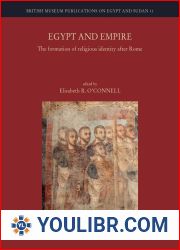
 49
49  3 TON
3 TON

